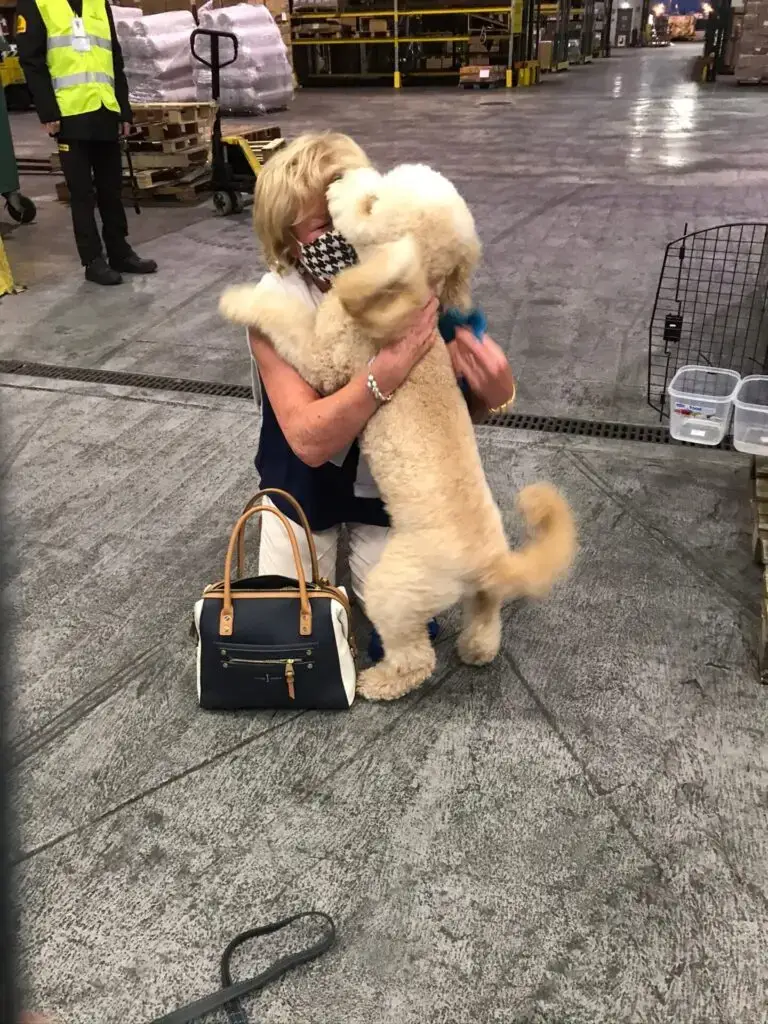Destination: Australasia
Taking Pets to Australasia
Taking Pets to Australasia
Australasia, and Australia specifically, is one of our most common destinations to fly pets to and this is closely followed by New Zealand. The safe and correct execution of travelling pets to these nations is tricky and complicated and has many potential pitfalls.
Most countries in Australasia and Oceania are rabies free, which means they require that the pets in UK have pre travel rabies vaccinations and pre travel rabies blood sample and then an extensive wait before they will be allowed into the country. The pets need import permits and export paperwork and a complex timing of pre travel blood samples. All of which is designed to preserve the biosecurity of the receiving nation.
The network of flights we have from UK to Australasia and Oceania are slightly limited, but the airlines we use are excellent at flying pets. But they all require a stopover – usually in Singapore.
If you require more information on pet travel to Australasia, then please do look at the relevant page and if you have any further questions then we will be very happy to help and advise.
Related Locations
Related Posts
“

Pippi the dog flew to Australia
Hi Rachel, Just wanted to let you know that we collected Pippi from quarantine this morning and she’s settling into her new home down under quite nicely.
She’s lost quite a lot of weight in quarantine, but generally she’s in great shape.
Thank you and everybody at Pet Air for everything – this was a long project for me: my initial enquiry with you was at the end of 2014, and at times I didn’t think it was ever going to happen…but here she is! You and your team made the whole thing very straight forward for me, and I’m very, very grateful.
Kind regards, Sxxxx
“
Millie to Auckland
I am writing to thank you for providing such a trouble-free service to get her from our home in Hampshire to our new home here is Auckland. In particular, many thanks to Emma Chalmers who handled everything so efficiently and managed our last minute panics – change of collection details less than 24 hours before we were due to fly out and our realisation that we should have left Millie’s vaccination card behind to travel with her. All our issues were dealt with calmly and promptly. Emma really is an asset to your company and you should be very proud of having her on your staff.
“

Bramble flew to Australia – September 2020
Well, that’s him arrived!
We picked him up this morning – only wrinkle was that the crate still did not fit the car but we can sort that out.
I will get the final bill from the Quarantine folk paid and it only remains for me to say a huge thank you to you and all of your colleagues along the way for getting Bramble here in challenging times and for steering me in the correct direction and mopping my anxious doggy-parent brow on more than one occasion!
Bramble is trying to follow everyone around as he gets used to his new surrounding and his Australian “pack” but I am sure as the days go by he will get settled!
Thanks for everything
Colvin
“
Pip to Australia
I just wanted to say a huge thank you for everything in getting Pip to Melbourne! She’s been home a week and a half now and is doing great! I think she likes Aussie life and is enjoying beach walks and the sunshine!
Pip was much better in herself than expected when I picked her up from the Australian quarantine, the facility seemed well organised and the staff were very nice. Thank you again for making the process so much easier for all of us – our family is now complete!
“

Melly went to New Zealand
Just wanted to let you know I collected Melly from quarantine today and brought her to her new home. Her tail has not stopped wagging. Thank you so much for making this possible, even through a global pandemic. You’re amazing.
“
Sonny, Floss and Mylo went to Cairns, Australia
I just wanted to let you know that sonny floss and Mylo have all arrived safely and are with dad in cairns enjoying their new home! I wanted to thank you for your great efforts in helping us to move our fur babies to Australia, I have had nothing but absolute confidence in you and your company and in making it a smooth transition for myself and my husband and our adored pets, your driver was extremely professional and certainly made me feel like he loved my animals as much I do and he was brilliant in what was an extremely emotional time for me, you are both a huge credit to your company and I feel so happy that we used you to take care of everything.
Thank you again, I wish you all the best and would 100% recommend you to anyone thinking of moving their pets overseas.
“

Maisy and Murphy travelled to New Zealand September 2020.
I just wanted to send you my absolute gratitude and thanks for the amazing service you provided me during such a horrible year! My situation is and has been a nightmare this year and a lot has gone pear-shaped BUT thanks to your help my fur babies were the easiest part of organisation for my unplanned move. Please pass this thanks on to your boss/manager and know that I am so grateful for your excellent service and support. Maisy and Murphy are heading to my parents at the end of their quarantine and it’s just me they are waiting for now. They travelled very well.
Again- many thanks and please take care. Blessings – Mel, Maisy and Murphy
“
Bert In Melbourne
“Dear Linsey and Catherine,
Sorry for the delay in replying and can I just say a massive massive THANK YOU for all your help with Bert, you were brilliant with our last minute issues, reassuring, calm and everything else.
We collected Bert last weekend and apart from being very pleased to see us and a tad skinny he is full of beans.
I’ve attached a couple of photos, feel free to use them anywhere you like (I apologise for appearing in one of them!).
If you ever want to put a client in touch with somebody as a testimonial then please do not hesitate.
All the very best,
Cxxxx and Nxxxxx”
“
Elvis, Oscar, Princess and Zion to Australia
“Hi Everyone
This is just to send you all a BIG thank you for your help, service, patience and understanding with the move of our four cats to Australia. The service you provided was excellent. Moving country can be so stressful but Catherine especially I knew I could contact you with any concerns or worries with the cats’ move and you would reply straight away with reassurance! From the time I received a quote to even the driver Kevin collecting the cats, I felt that your service was first rate.
Lenny, thank you for sending your updates once the cats arrived in Melbourne. The video was such a lovely touch and was so reassuring.
The cats have settled in well. Princess is still a little nervous (she is a nervous cat anyway) but the others seem fine and are all adjusting well!
Some pics are attached 🙂
Thank you again.
Take care
Cxxxxx Dxxxxxx”
“

Sansa to Australia – August 2019
Everything went very well with Sansa’s relocation to Australia… in fact, so much better than I expected. She is quite a sensitive little thing, but she has settled into her new Aussie home really quickly. Thanks so much for looking after her and making the whole procedure far less stressful than it could have been. Thanks again!
“
Shah and Gus at Perth
Shah & Gus arrived safe and well. They have settled in very quickly.
It was very emotional collecting them at the Airport. Thanks to all at PetAir for taking care of my fur babies.
“
Dotty to Australia
“Dear Catherine and Linsey,
Just wanted to say thank you for your help in arranging Dotty’s travel arrangements to Australia. All went smoothly and she is settling really well. Here we are on Brighton beach Adelaide at the weekend. Doggy paradise.
Best wishes
Dxxxxx”
“
Amber is loving Sydney life!
Thank you so much for everything Pet Air did for us. We are so very appreciative of everything you did, both for us and for Amber. It took all the stress and worry out having you guide us the whole way through the process and we knew Amber was in safe hands. I would also be happy to recommend you to anyone who wanted to move their pet 🙂
“
Jet and Tilly flew to New Zealand – March 2021
We used PetAir UK’s Gold service to help relocate our dog and cat from the UK back to New Zealand. They took the stress out of what seemed like a very daunting and complicated process, especially when we had the rest of the family and possessions to relocate in a pandemic. So thank you PetAir and Rachel especially from the Elliott family and Jet and Tilly
“

Jett flew to Australia June 2023
Oh how happy we are!!
Thankyou Pet Air UK for an amazing service getting our 10 year old Goldie from The UK back to his homeland Australia. Special mentions to Alfie and Kim for keeping us updated when transporting him and to Ali who set us up at the start and for answering my millions of questions and last but definitely not least to Emma our wonderful Export Consultant for her time, patience and expertise, she also answered my millions of questions with promptness and professionalism and kindness. We have loved being kept informed of Jetts whereabouts along the way, everything was clear and concise and the photos you get really do make a difference. We were thankful to know that Jett was healthy and calm during his travels! First class service! Our advice for anyone wanting to transport their pet is – plan early, ask all the questions and definitely choose Pet Air UK!”
“
Frankie flew to New Zealand – February 2021
PetAir have been fantastic. They helped us with the move of our Jack Russell Frankie from the UK to New Zealand. We were given great advice from the get go which gave us confidence in their service. They were so knowledgeable and gave us the best options during the current pandemic. We had regular updates and pictures – even in SIngapore(was very impressed with this!) They also recommend an amazing quarantine kennels in Auckland called Pethaven, who bathed and played with our dog as if she was their own. We would highly recommend to anyone looking to fly their pet overseas!
“
Nigel the cat flew to Tasmania
Hi Lenny and Catherine
Nigel is home, safe and sound. He’s explored every room of his new home, steadfastly ignored all his new toys, eaten far more treats than strictly necessary, and is now cuddled up by my feet on the sofa looking very contented and happy.
A huge thank you to both of you and everyone else involved in getting him safely here. You’ve obviously looked after him very well, and it’s wonderful to have him back. We missed him so much!
We really appreciate everything you’ve done. If we ever hear of someone wanting to bring their pet over from the UK, we will keep recommending you relentlessly until they give in!
Thanks again,
Lxxxx and family.
“
Finally, Athena made it over to Brisbane, Australia!
Hi Catherine,
Just to let you know I collected Athena from BNE yesterday for a very happy reunion.
I’m not sure which of us was more excited! Actually, my Dad wins – hands down ! He’s already calling Athena “my dog” and after only 3 hours together the pair of them are inseparable.
Thank you for all your help. I can’t imagine even trying to organise all this by myself. Fantastic service!
Warm Regards,
Drew, Roz and Athena
Oh….And Jim!
“
Laika and Skip flew to Melbourne, Australia
I just wanted to say thank you so much for all your help in getting my babies safely to Melbourne. I was very happy with the service and never felt a bother when I asked a thousand questions about the process. I really appreciate all the reassurance and understanding you provided, as this helped keep my anxieties at bay. I was so impressed by how easily you were able to sort and rearrange our travel arrangements when I became ill after having my baby. It couldn’t have been easier or more stress free on my part. I picked up Laika and Skip from quarantine expecting them to be skinny and shaking with stress, but they were the happy healthy pups I left in the UK. They have settled into life here so easily and I am so glad we were able to bring them along. Thank you Catherine and thank you to everyone at PetAir UK, I would definitely recommend you to anyone!!
“

Archie flew to New Zealand – September 2018
Archie was looked after SO SO WELL. Such a personal service from start to finish. We went for gold and it made the process so straight forward exporting him to NZ – it is very complicated and you don’t save money if you just try and do the other bits yourself. When he was picked up the guy was so kind and understanding, let us make sure he was safely in his crate. Archie got a stop over in Singapore where they let him out the crate – I couldn’t find another company that allowed this. Liaison with the Quarantine was also facilitated. Everything went so smoothly and we were so happy to be reunited with him 10 days later. PetAirUK were also very reasonably priced – you might find a service that saves £100-200 but it won’t be nearly as good. It’s worth it for peace of mind for what is a stressful long and complicated process.
“
Teddy to Australia
“Hi Linsey, Many thanks for your message and bringing teddy to us safely. He is doing well and getting use to his new life down under! I attach a couple of pics from his day he arrived where he is smiling!:
Many thanks, Mxxxxx & Ted”
“
Fuzzy and Diablo to Auckland
“Hi Linsey
My apologies for not getting in touch after we reached Auckland. Everything was a bit manic with trying to find houses, jobs and making sure the cats were ok.
I just wanted to say a huge thank you for relocating Fuzzie and Diablo for us. Communication was prompt, you obviously had the cats needs at the top of mind when making the arrangements and we really appreciated the fact that this part of the relocation went completely smoothly.
I can’t recommend you highly enough and have already recommended your services to other people we know who are relocating.
Thank you again for all your hard work – a great job.
Many thanks
Exxxx”



